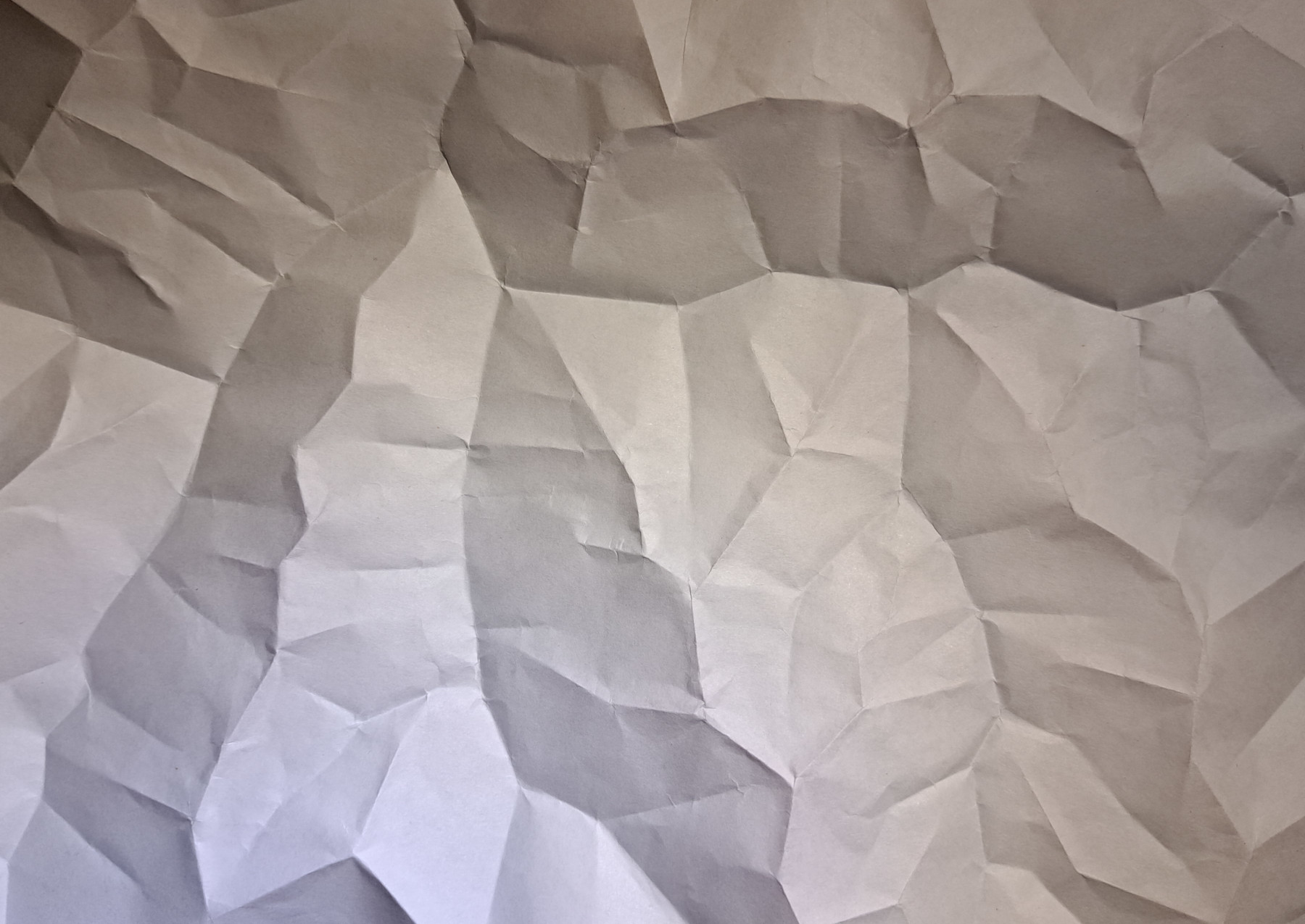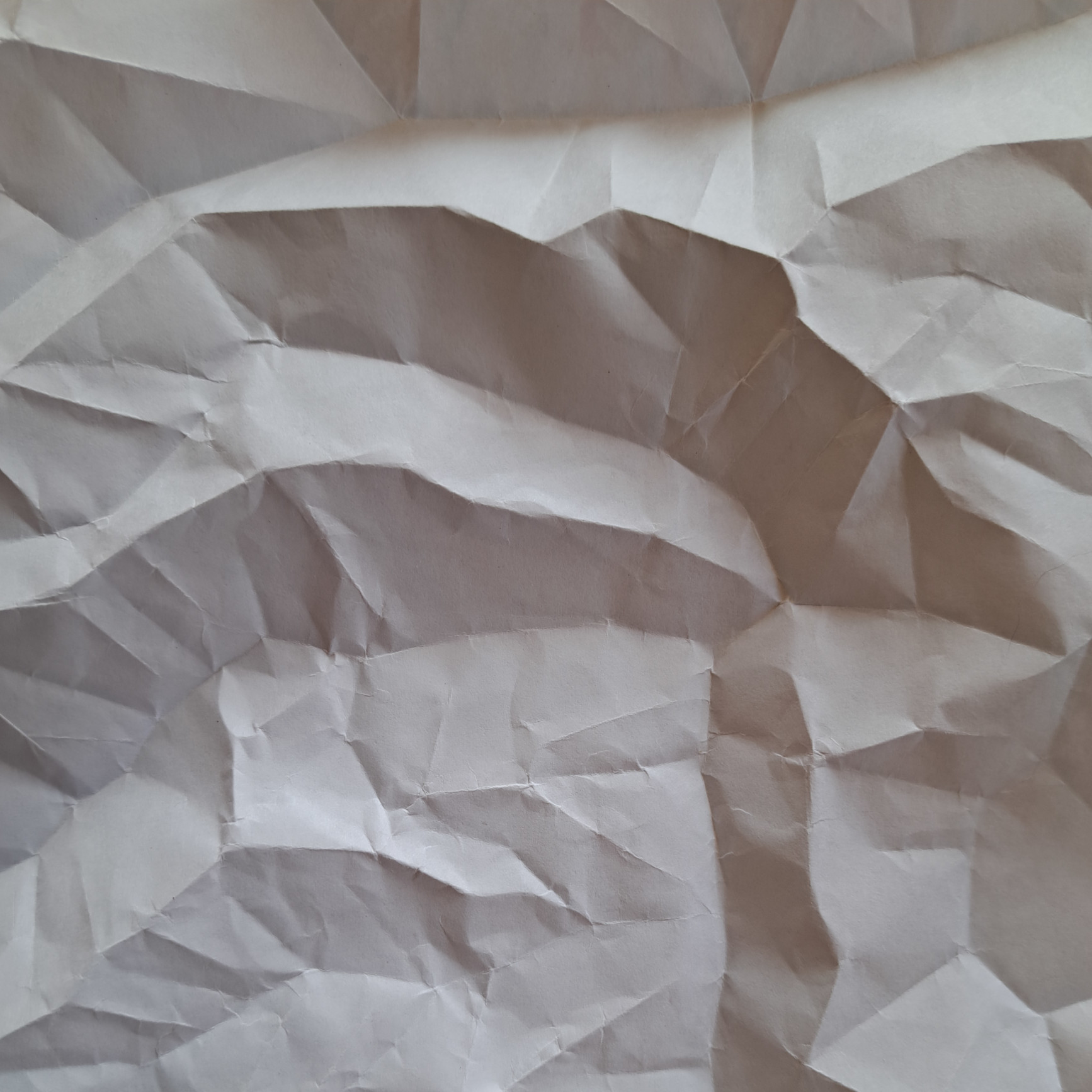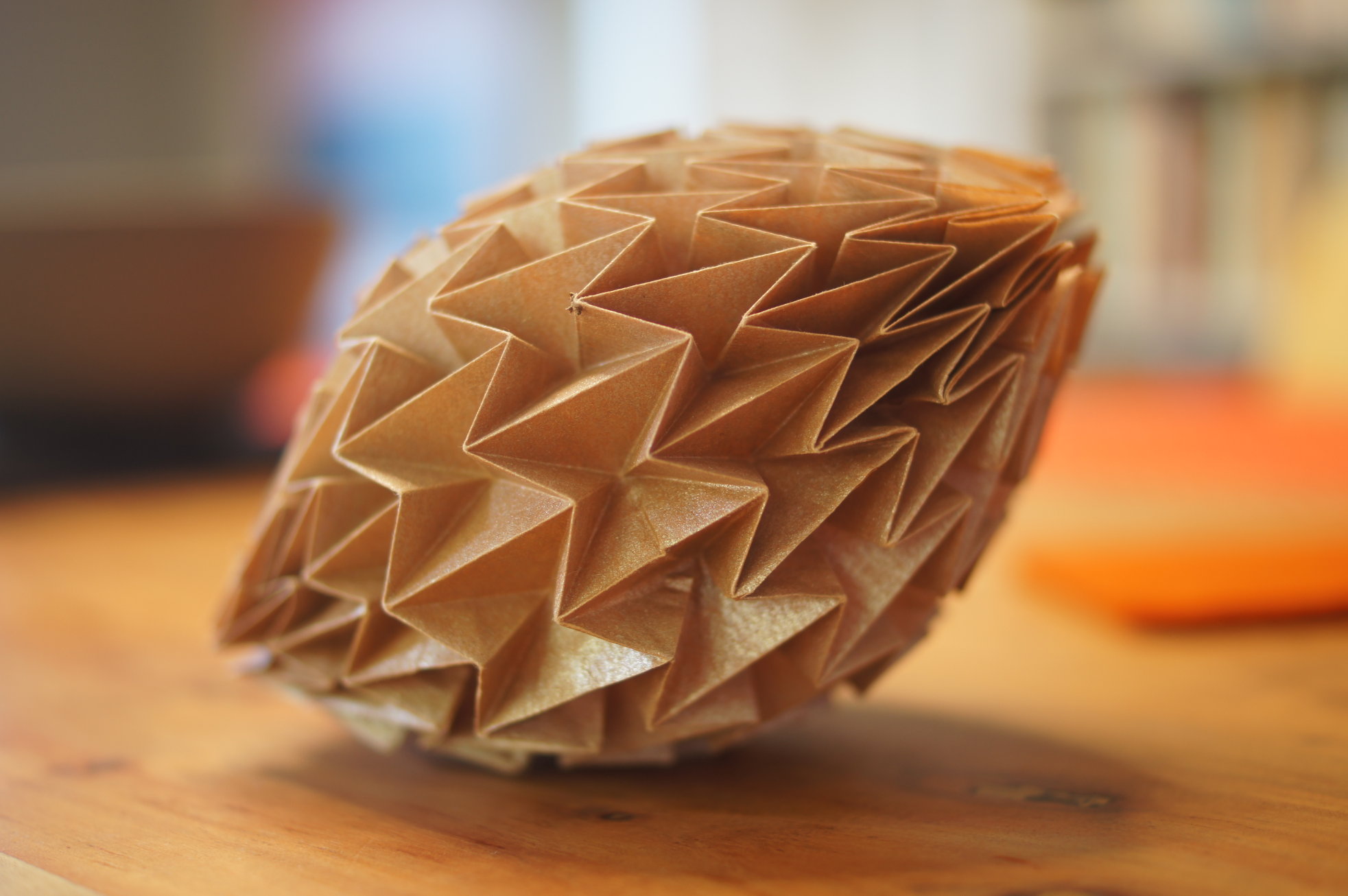library(terra)
library(whitebox)
library(tmap)
library(dplyr)
wbt_geomorphons("data/dem.tif", "data/geomorphons.tif", search = 20)
geomorphons <- rast("data/geomorphons.tif")
inset_area <- ext(geomorphons) - rep(160, 4)
tm_shape(geomorphons %>% crop(inset_area) %>% flip(direction = "vertical")) +
tm_raster(
col.scale = tm_scale_intervals(
values = "RdBu", n = 10)
) +
tm_layout(
frame = FALSE,
legend.show = FALSE)05 Analog Map
Non-digital maps.
A (carefully) crumpled paper hillshade (yes, it is part of a real landscape).
What happened to the tmap vs ggplot2 cage fight?
This one doesn’t really fit with my tmap vs ggplot2 set up, but it prompted me to look a bit more closely into an idea that has interested me since I first saw this amazing video by Ron Resch one of the pioneers of tessellation-based origami.
I’m a folder (not a designer) of origami, and so this map was an opportunity to explore this idea a bit further.
How I made it
So what I did was to take a DEM, and find valley floors and ridge lines. For this I used the Whitebox Tools geomorphons tool. There may be better option but this worked for me. I can demonstrate this in R:
The blue areas in the map are valley floors, the red areas ridge tops. It so happens that in origami, red and blue lines are often used in crease patterns to distinguish mountain folds and valley folds. So pinching the blue linear features into creases and from the reverse side (i.e., through the back of the printed page) pinching the red linear features into creases gives the ‘crumpled’ sheet I want.
So anyway, I printed the map on a sheet of paper, and then made the folds. Here’s another example.
Thoughts
If I’d thought it through a bit more carefully, I’d have inverted the landscape before printing it (since I am effectively folding it in reverse), but that’s a detail for another time (in cartographic terms, north is not up, but that’s a map for another day…). It also required some care lighting the picture to avoid ‘terrain inversion’, and I’m not even sure it avoids that entirely. It’s very clear in real life which parts of the landscape are ‘up’.
I’ve experimented a little with the approach, and it seems to work better on more highly dissected terrain.
More origami
Next up, I need to do some digging in Robert Lang’s wonderful Twists, Tilings, and Tessellations. There are definitely connections between this ‘folded terrain model’ and key principles of origami tessellations, which in turn are closely related to concepts in surface networks.
Even more origami
If this stuff intrigues you, then go see the phenomenal Origami Simulator by Amanda Ghassaei.
To finish, here’s a highly dissected terrain (not really) that’s an origami tessellation classic by the Shumakovs…
… which can also be formed into a ball.




